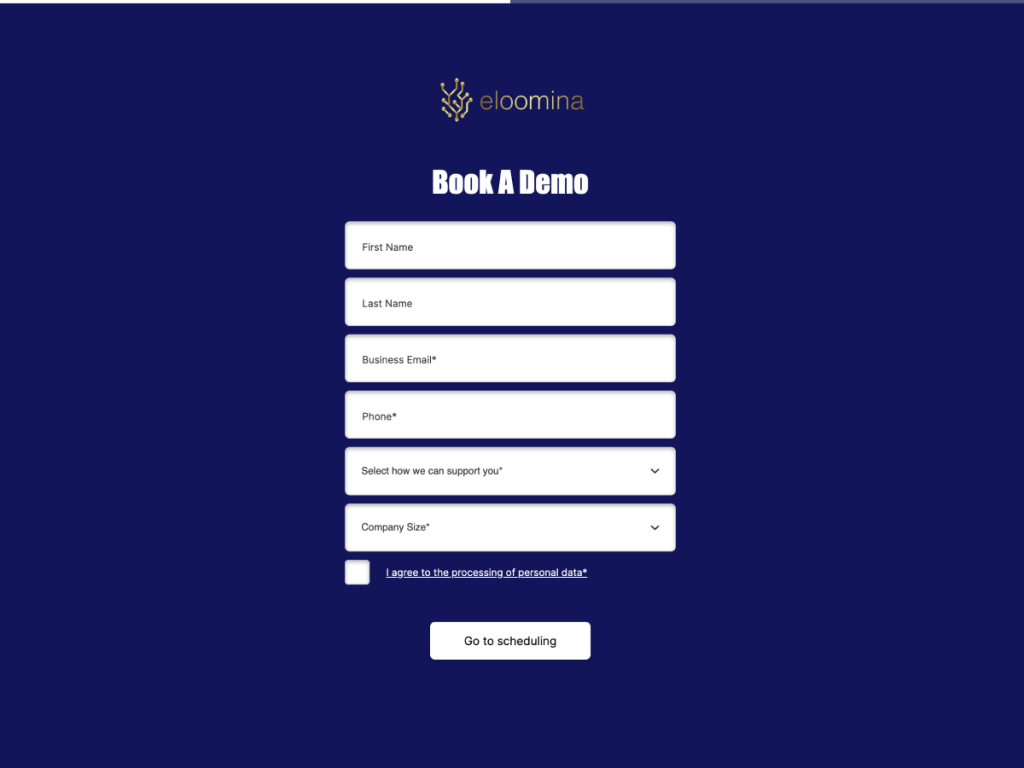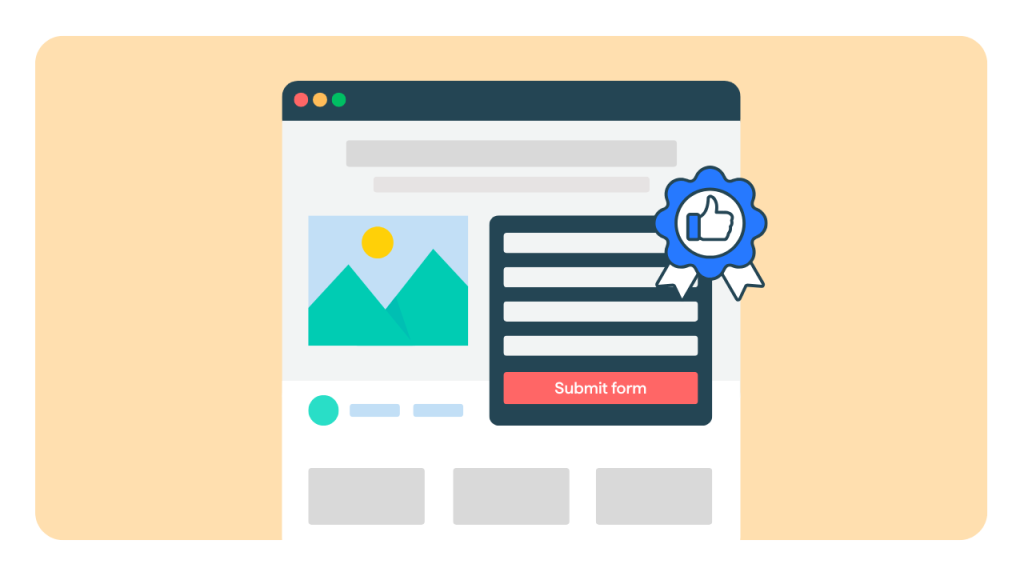A landing page isn’t just some pretty digital brochure. It’s your conversion engine. Whether you’re pushing free trials, booking demos, or qualifying leads, a solid landing page can make the difference between steady growth and endless frustration.
In this guide, you’ll learn how to build SaaS landing pages that actually convert. We’ll cover everything, how to write headlines that hit, design layouts that work on any screen, and use data to keep improving results.
You’ll also find:
Fresh stats that show what’s working right now
Real examples from top SaaS brands
Simple, practical tips you can apply today
What is a SaaS Landing Page?
A SaaS landing page is a focused, standalone web page created specifically to convert visitors into leads or customers for a Software-as-a-Service product. Unlike a general homepage that serves multiple navigation purposes and audiences, a SaaS landing page is built around a single campaign or message, such as promoting a free trial, demo request, or feature update.
It is tailored to a specific goal and designed to drive action without distractions, using persuasive copy, visuals, and a clear call-to-action (CTA). These pages are typically used in paid ad campaigns, email marketing, or product launches where conversion performance is critical.
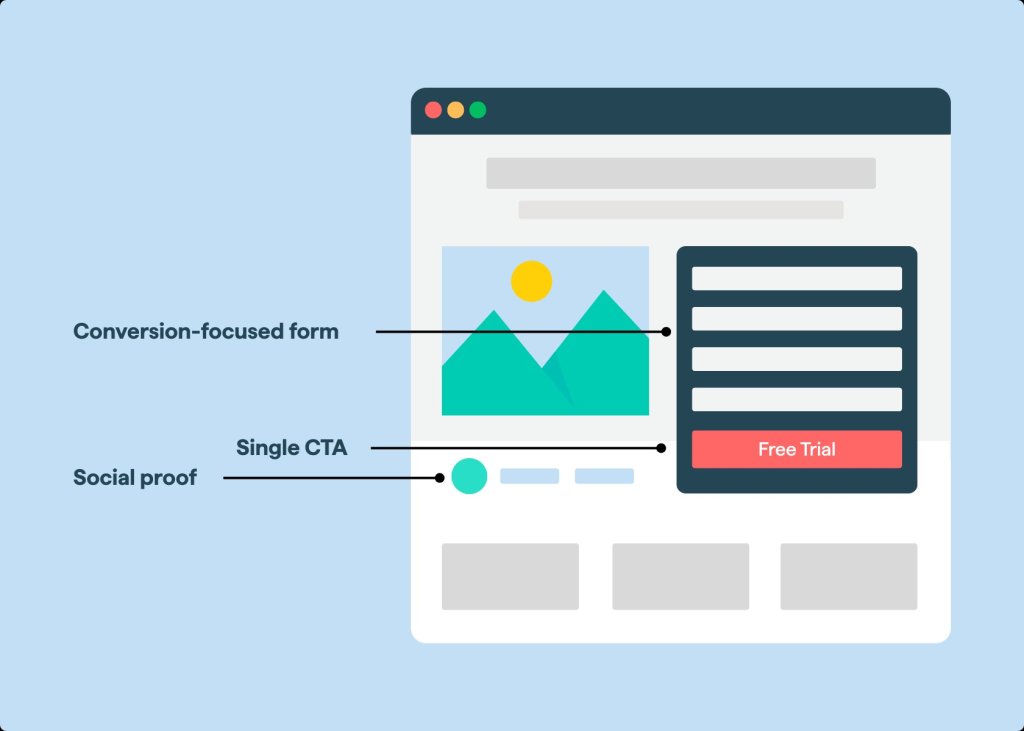
Why They Matter:
Effective landing pages turn ad clicks and visits into leads or customers. Nearly half of marketers (43.6%) say lead generation is the primary goal of their landing pages. Unlike homepages, which 77% of companies still use as “landing” pages, true landing pages are laser-focused and can significantly outperform broader site pages in conversion rate.
SaaS Conversion Challenge:
The median landing page conversion rate across industries is ~6.6%, but SaaS lands much lower at ~3.8%, the lowest of any industry. This means marketers in SaaS must optimize relentlessly to beat the odds. Top-performing landing pages (top 10%) see conversion rates above 11%, proving there’s room to grow by applying best practices.
High ROI Potential:
Done right, landing pages are a cornerstone of SaaS growth. Companies that increased their number of landing pages from 10 to 15 saw a 55% boost in total leads, and those with 30-40 landing pages generate 7X more leads than those with only a few pages. More targeted pages = more opportunities to convert. It’s not just quantity, but quality too, a well-crafted page can far out-convert generic tactics (dedicated landing pages average 23% sign-up rates vs. ~3% for typical pop-ups).
In short, mastering SaaS landing pages means more leads, lower customer acquisition cost, and better ROI on your marketing spend.
Why High-Converting SaaS Landing Pages Are Critical
First impressions count: You often have mere seconds to convince a visitor to stay. Within the first 5 seconds of viewing a landing page, a visitor should understand what your product offers and how it helps them.
If the value isn’t immediately clear, they’ll bounce, contributing to the 70–90% average bounce rate on landing pages. In fact, about half of visitors leave without clicking anything at all, so clarity is key.
Dedicated pages outperform homepages: Sending campaign traffic to a generic homepage is a missed opportunity. Yet 44% of B2B companies still direct paid ads to their home page (which tries to serve many purposes).
A targeted landing page aligned with the ad message will convert better by focusing on one offer. Case in point: when a B2B company switched to highly personalized, campaign-specific pages, they saw a 68% increase in conversions vs. the generic page used before.
Lead generation and segmentation: For 43.6% of marketers, capturing leads is the #1 goal of landing pages, especially true in SaaS, where free trials or demos start the sales cycle. Landing pages let you tailor messaging to different segments or use-cases, boosting relevance.
Companies with 40+ landing pages have 500% more leads than those with under 10 pages, by segmenting offers to specific audiences. More pages targeted to specific personas or pain points = more (and better qualified) leads.
Higher conversion rates than other channels: Landing pages exist to convert. They actually have higher opt-in rates than generic website forms. For example, the average sign-up rate on landing pages is 23%, higher than any other type of signup form (pop-ups, slide-ins, etc.).
Despite accounting for just 5% of signup form impressions, landing pages drive a disproportionate share of conversions, indicating marketers could capture more leads by using dedicated pages instead of, say, over-relying on pop-ups (which average only ~3% conversion).
SaaS buyer’s journey support: In SaaS (especially B2B), purchases often aren’t impulse decisions, they require education and trust. A great landing page allows you to speak to a specific stage of the buyer’s journey (e.g. a page for “Schedule a Live Demo” addresses a more informed visitor, whereas a “Download Our Ebook” page captures top-of-funnel interest).
By matching the page to the visitor’s intent, you nurture them more effectively. For instance, 39% of B2B marketers say landing pages are their most effective way to get newsletter signups, which then feed lead nurturing programs. In short, landing pages are the crucial bridge between traffic and revenue in the SaaS marketing funnel.
Key Elements of a High-Converting SaaS Landing Page
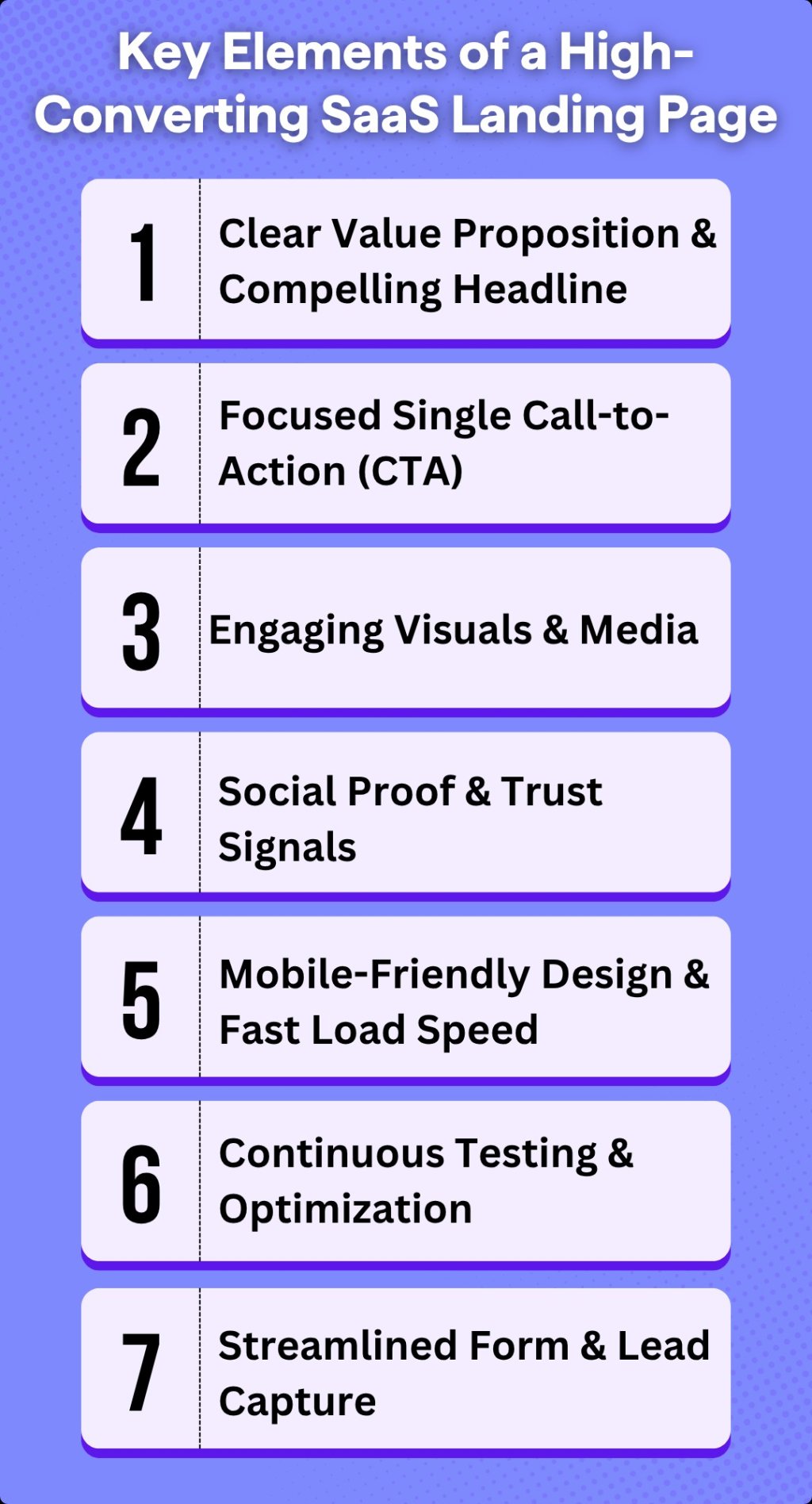
Clear Value Proposition & Compelling Headline
A strong SaaS landing page begins with a clear, benefit-driven headline. Within the first few seconds, visitors should grasp what your product does and why it matters. Experts emphasize that clarity should always come before cleverness, as users won’t scroll to decipher a vague message.
The headline must speak directly to the user's pain point, highlighting an outcome over a feature, for example, "Track Bugs in Half the Time with XYZ" is more powerful than "XYZ Software Version 3.0 Released!".
To further improve conversions, simplicity is key. Text written at a 5th to 8th-grade reading level yields 11.1% conversion on average, while overly complex copy converts at just 5.3%.
One study even found a 24% drop in conversions when using advanced vocabulary. Headlines also deserve focused attention, testing has shown that a powerful, pain-oriented headline can improve conversion by up to 250–300%.
Focused Single Call-to-Action (CTA)
The best-performing SaaS landing pages focus on one primary CTA and eliminate distractions. Pages with a single CTA convert around 13.5%, whereas those with multiple options drop to 10.5%. Including more than one offer can result in conversion drops of up to 266%.
To maintain a high conversion rate, your CTA button should be bold, contrasting in color, and clearly positioned near the top of the page. Platforms like Figma do this well with their bright, unmissable "Sign up for free" buttons. Microcopy also plays a role, buttons like "Create My Account" perform better than a bland "Submit", with A/B tests revealing that more action-oriented wording often increases clicks.
For longer pages, repeating the CTA helps maintain conversion momentum, as seen on Mixpanel’s landing pages, which repeat the “Request Demo” button in multiple scroll points.
Also, to improve conversions, minimize user distractions. Only 16% of landing pages fully remove the top navigation menu, despite evidence showing this simple change can double conversion rates.
Any extra link, especially outbound ones, invites users to leave your funnel. WordStream found that 33% of landing page links were external, such as social icons, which diluted conversion. Aim for a 1:1 attention ratio, where one conversion goal matches one clickable action.
Even internal links should be scrutinized; each must support the singular CTA. Simplify the user’s decision-making by reinforcing one message and offer throughout the page.
Engaging Visuals & Media
SaaS can be abstract, which makes visual support crucial. Visuals help users quickly understand complex ideas, our brains process images in 13 milliseconds and retain 80% of what we see.
Incorporating screenshots, dashboards, and human-centered photos helps anchor abstract software in real-world outcomes. Video can be even more impactful; 38.6% of marketers say it has the greatest positive effect on landing page conversion.
In fact, explainer or demo videos have shown to boost conversion by up to 86%, and viewers retain 95% of video messaging versus 10% from text. Use images to break up long content and always ensure they serve the headline or user benefit.
Optimize file sizes and load times by using efficient formats like WebP and embed videos wisely to maintain speed.
Social Proof & Trust Signals
SaaS users are skeptical, social proof builds confidence. While 77% of marketers omit it from landing pages, 37% of top-performing pages feature testimonials. Adding even a single testimonial can boost conversion by 34%. A great testimonial aligns with the CTA and includes a name, photo, and company.
Usage stats and client logos also help: showcasing that you’re trusted by well-known brands, like Slack does with Fortune 100 company endorsements, creates a bandwagon effect. Trust badges, SSL security icons, and privacy messages reassure users when submitting information.
Including visible contact details like chat or a phone number boosts perceived transparency, which subtly lifts conversion. Concrete proof, such as “Over 1 million users” or “Gartner Magic Quadrant Leader 2025,” adds weight to your claims.
Mobile-Friendly Design & Fast Load Speed
Mobile is now dominant: 82.9% of landing page traffic comes from mobile devices. Your design must be responsive, featuring legible fonts, tap-friendly buttons, and mobile-first content structure. Mobile-optimized pages even convert slightly better (11.7%) than desktop pages (10.7%).
Load speed is critical, pages that load within 1 second convert 3× higher than those taking 5 seconds. A delay of just one second can reduce conversion by 7%.
Moreover, 47% of users expect pages to load in 2 seconds, and 30% abandon pages that take more than 6 seconds. With bounce rates for landing pages ranging from 70–90%, fast, frictionless performance is essential.
Core Web Vitals also impact SEO, so optimizing for metrics like Largest Contentful Paint is a win-win. Personalization boosts performance, too, dynamic content can increase mobile conversions by 25.2%.
Continuous Testing & Optimization
Ongoing testing is the backbone of sustained landing page success. Around 77% of companies run A/B tests, and 44% use specialized optimization tools. Testing the CTA, headline, form length, or imagery can yield surprising results. Start with high-impact changes, like CTA placement or button copy.
Only 1 in 8 A/B tests produces a statistically significant win, but consistent iteration compounds. President Obama’s 2008 campaign famously generated $60 million more from a single landing page variation. Conversion rate optimization tools often deliver a 30% lift in performance and average a 223% ROI.
Successful marketers also create multiple landing pages per campaign, 48% build a new one for each offer, allowing better segmentation and personalization over time. These cumulative learnings will eventually become your brand’s unique conversion playbook.
Streamlined Form & Lead Capture
In SaaS, a conversion usually means capturing a lead, and that often happens through a signup or contact form. The design of that form can make or break your conversion rate. Every extra field adds friction, and friction causes drop-offs. Shorter forms tend to perform better. One study found that three-field forms (name, email, company) converted around 10%, while single-field forms (just email) converted about 7%.
Interestingly, asking for a bit more information can actually attract more qualified leads, since those who fill out slightly longer forms are typically more invested. The key is balance, ask only for what you truly need. For a whitepaper, an email address might be enough. For a demo, name, email, and company size make sense. But asking for unnecessary details like a phone number or budget too early can hurt conversions.
Beyond length, focus on usability. Use clear labels, a simple one-column layout, and visible error messages to reduce frustration. Make the submit button stand out and use action-oriented text like “Get My Free Trial” instead of a bland “Submit.” Even with today’s interactive tools, over 62% of landing pages still use forms for lead capture because they work. Just remember: the simpler and smoother your form, the higher your chances of turning visitors into leads.
Create Your Own Landing pages
Get Started with 350+ Templates
Examples of High-Performing SaaS Landing Pages (and Why They Work)
Mixpanel: “Request a Demo” Landing Page:
Mixpanel, an analytics SaaS, offers a clean, focused demo request page that converts well. The page immediately highlights a benefit-driven headline about gaining insights from user data, and it keeps the layout uncluttered. There’s a short form above the fold asking for just basic info.
What stands out is the use of social proof logos, right beneath the header, Mixpanel showcases well-known client companies (e.g., Uber, Ancestry) which instantly boosts credibility.
They also repeat the CTA (“Request Demo”) in multiple sections of the page, including a final CTA at the bottom, ensuring the user always has a conversion opportunity handy.
Tip to emulate: If you offer demos or sales-assisted signups, highlight recognizable customers and break your page into clear sections (problem, solution, proof, form) like Mixpanel does. It builds trust and guides the visitor toward converting without distractions.

Trello (Atlassian) Free Trial Sign-Up Page:
Trello’s sign-up landing page (similar in approach to Asana’s) is a great example of minimal friction for a freemium SaaS product. The headline is straightforward about the value (“Trello helps teams work more collaboratively and get more done”), and the design is visual – featuring the app interface in the background. The sign-up form is just a single field (email address) with a big call-to-action button that says “Sign Up – It’s Free.” This one-field form aligns with best practices: Trello knows all they really need is your email to get you started, so they don’t ask for name, company, etc. at this point.
Below the form, Trello adds subtle trust indicators like “Join 1,000,000+ teams” and shows logos of a few big-brand users for social proof. The combination of zero cost (free), ultra-short form, and proof that lots of others use it dramatically lowers the barrier to conversion.
Why it works: It removes almost every ounce of friction, the visitor’s mindset is “why not give this a try, it’s easy and free.” SaaS marketers can learn from this: if you offer a free trial or freemium signup, consider reducing your form to as few fields as possible (even one) and highlight that it’s free/no-risk prominently.
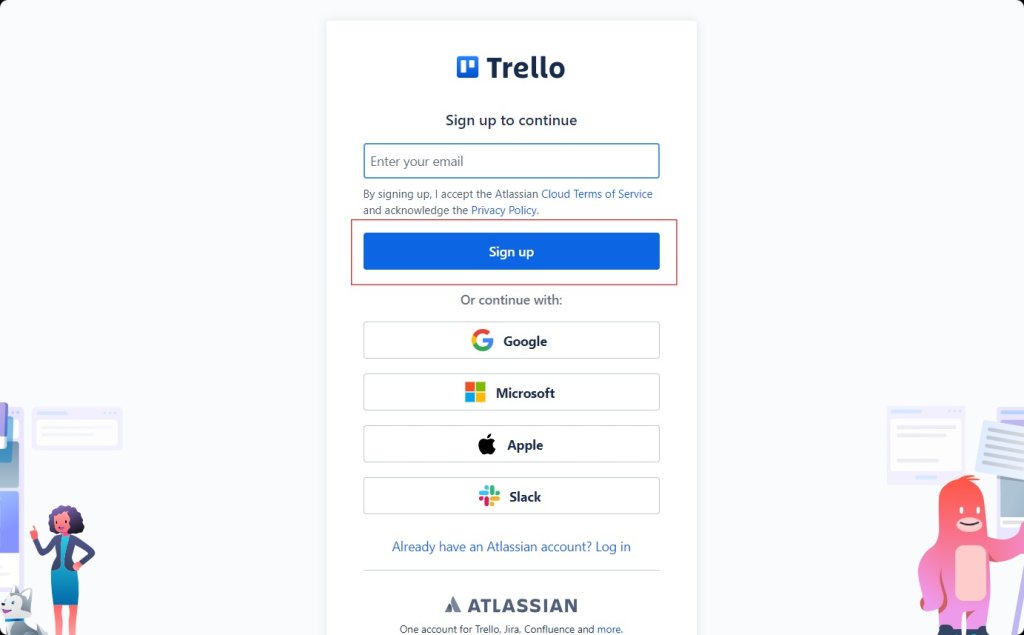
Slack: Collaboration Software Landing Page:
Slack’s homepage/landing experience (geared towards getting users to sign up or learn more) is often praised for its clarity and trust-building elements. The top of Slack’s page features a bold headline that encapsulates its value (previously, Slack used a tagline like “Where Work Happens” which is simple and intriguing).
Right below, they often place a sign-up box or a CTA button to “Get Started.” What Slack does exceptionally well is integrate social proof and storytelling: for instance, they have showcased videos or quotes from teams at well-known companies (like a testimonial video from someone at Airbnb or Target using Slack) and mention how many companies or what percentage of Fortune 100 companies use Slack.
This “bandwagon” approach says, essentially, “the best companies trust us, you can too.” Additionally, Slack’s page design is visually engaging without being overwhelming, playful illustrations and a few GIFs demonstrate the product, but the page is not overly long. Marketing takeaway:
If your SaaS already has a strong user base, leverage that in your landing page. Show logos, brief case studies, or a quick stat like “used by 100,000+ organizations” to build trust. And ensure your CTA (e.g., “Try Slack for Free”) is obvious and repeated at logical points. Slack’s example shows the power of combining emotional appeal (people at real companies praising it) with a frictionless sign-up process.
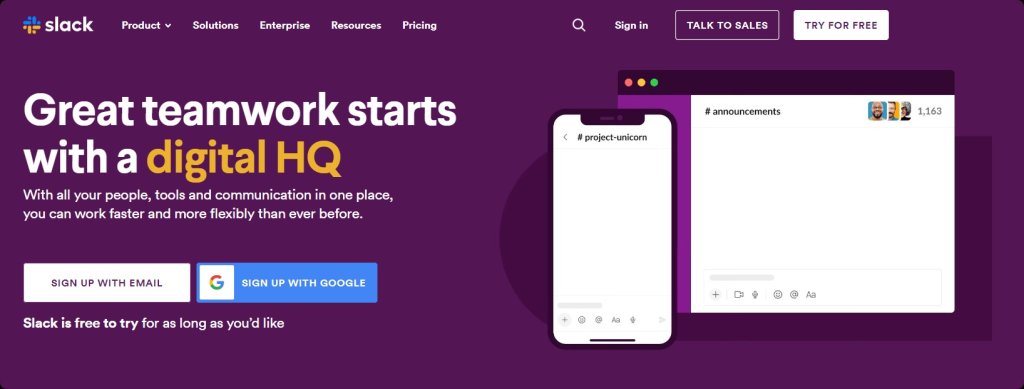
Oracle: Whitepaper Lead Magnet Page:
Not all SaaS landing pages are for direct signups; many are for content offers (whitepapers, ebooks) to generate leads. Oracle provides a solid example with their landing page offering a downloadable whitepaper.
The page has a professional design consistent with Oracle’s brand (important for enterprise trust), and a clear headline that names the whitepaper and the value it offers. An image of the whitepaper cover is displayed prominently, this is key for setting expectation (visitors see “oh, it’s a report I’ll get”).
The form, while a bit longer (common in enterprise contexts), is placed above the fold and the CTA button is bright and action-oriented (“Download Now”). What Oracle does well is making it immediately obvious what you get and why it’s useful, which can convince higher-level decision-makers to exchange their info for the content.
They also include a bit of supporting copy about the report’s insights and sometimes testimonials or analyst quotes to increase perceived value.
Lesson: If your conversion goal is a content download, treat that landing page like a product, sell the content. Use a compelling title, bullet-point what the reader will learn, show a cover image, and keep the form as short as possible for the context.
Oracle’s page works because it projects authority (big brand + quality design) and assures the visitor that what they’ll get is worth it (which in turn justifies why they should fill out the form).
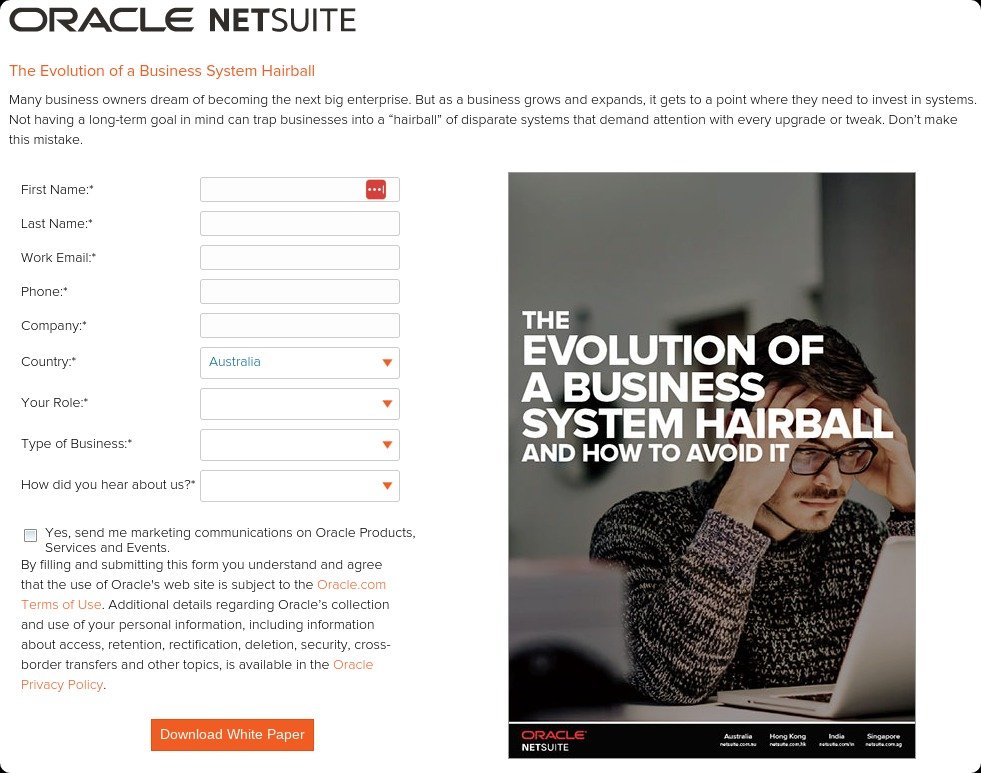
(Feel free to draw inspiration from these examples, but remember to tailor best practices to your own audience. A startup’s landing page might look simpler and more playful than an enterprise SaaS page like Oracle’s, and that’s okay if it suits your users. The common thread is a clear value prop, one CTA, social proof, and excellent UX.)
Conclusion & Next Steps
A high-converting SaaS landing page isn’t about one big trick, it’s about small, smart optimizations that work together. From sharp headlines and persuasive visuals to simple forms and minimal distractions, every detail matters. Even small tweaks, like clearer copy or fewer fields, can double conversions.
Always view your page through your prospect’s eyes. Does it clearly show the benefit? Does it build enough trust to make them click “Sign Up”? Keep testing, measuring, and refining until the answer is yes.
Landing page builders like involve.me make this process easier. With its drag-and-drop builder, you can create interactive, personalized landing pages, run A/B tests, and track performance, all in one place.
Next step: Choose one offer (a free trial, demo, or ebook), create a dedicated page using these best practices, publish it, and review the data. Then refine. Every small improvement brings you closer to stronger conversions and faster SaaS growth.
Create a landing page in minutes
No coding, no hassle, just better conversions.
References and Sources
involve.me Blog (2026) – “100+ Landing Page Statistics You Should Know (2026 Edition)”
involve.me Blog (2025): “10 Best Lead Generation Landing Page Examples (That Actually Convert)”
Backlinko (2024): “12 Essential Landing Page Statistics for 2024”
KlientBoost (2025): “58 Landing Page Statistics w/ Sources [2025]”



